Our tool for managing your permission to our use of cookies is temporarily offline. Therefore some functionality is missing.

BMW EMISSIONS.
Understanding the standard testing methods and results.
In 1992, the New European Driving Cycle (NEDC) was introduced. This procedure was used to determine the fuel consumption and emission values of vehicles.
In September 2018 a new driving cycle called Worldwide Harmonized Light Vehicles Test Procedure (WLTP) was introduced to replace the NEDC. This laboratory test is also supplemented by an emissions test that measures pollutants directly on the road: Real Driving Emissions (RDE).
These test procedures enable consumers to better estimate their vehicle's fuel consumption and emissions.
In 1992, the New European Driving Cycle (NEDC) was introduced. This procedure was used to determine the fuel consumption and emission values of vehicles.
In September 2018 a new driving cycle called Worldwide Harmonized Light Vehicles Test Procedure (WLTP) was introduced to replace the NEDC. This laboratory test is also supplemented by an emissions test that measures pollutants directly on the road: Real Driving Emissions (RDE).
These test procedures enable consumers to better estimate their vehicle's fuel consumption and emissions.
FROM NEDC TO WLTP.
WLTP is based on an approximation of the test conditions to real-world circumstances, which means that the values determined will also have a greater relevance to reality. Among the changes this involves are redefined, significantly stricter test conditions and higher speeds together with a substantially longer test duration (30 instead of 20 minutes).
To obtain a more precise determination of CO2 emissions, this test procedure includes not only standard equipment – as was previously the case – but also all optional equipment of a vehicle. This produces two values for each type of vehicle: the lowest and highest possible standard consumption value according to aerodynamics, weight and rolling resistance.
Thanks to WLTP, you are able to better assess a vehicle's consumption and CO2 emissions. In the case of a specific vehicle configuration, the individual standard value will be indicated directly.
In spite of the great accuracy, deviations are of course also possible with this test procedure. Everyday consumption and CO2 emissions continue to be subject to the different conditions of topography, climate and personal driving technique. The traffic situation, the current load carried and the use of devices such as the air conditioning system are further influences on the consumption of a vehicle.
One thing is clear: the test conditions are more realistic than ever before, which means that higher fuel consumption and CO2 values as well as lower ranges for electric vehicles can be expected on paper. However, this will not have any adverse effect on the real fuel consumption or range. Furthermore, the BMW Group is always working on new technologies in order to improve consumption and range.
The BMW Group has already transitioned to the new test procedure, having prepared its product portfolio step-by-step with new vehicles, new engine versions or technical revisions. This ensured that all vehicles within the entire fleet of the BMW Group comply with the applicable legislative framework at all times.
From September 2018, all manufacturers were obliged to test in accordance with WLTP for vehicles sold in the EU as well as in Switzerland, Turkey, Norway, Liechtenstein, Israel and Ireland.
In December 2020, all countries that adopted the EU legislation for vehicle registration had to indicate and communicate WLTP values for all vehicles.
WLTP EXPLAINED ON VIDEO.
These films inform you about the most important facts for the WLTP measuring technique.
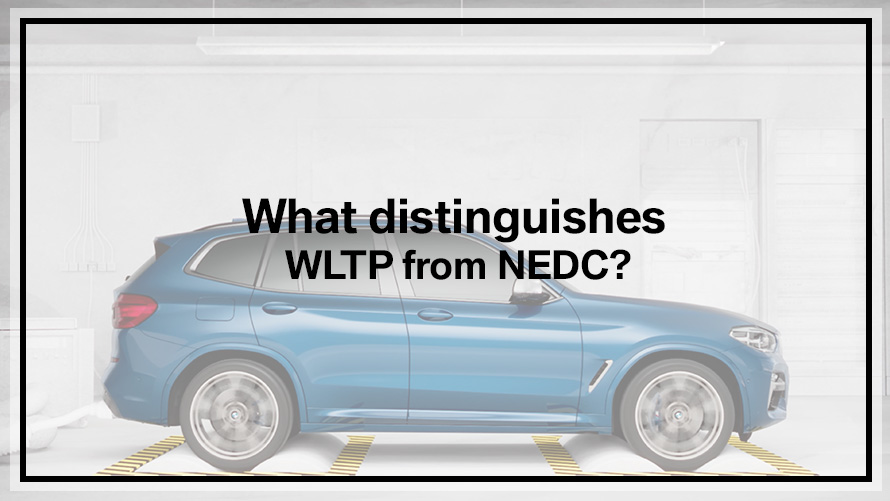

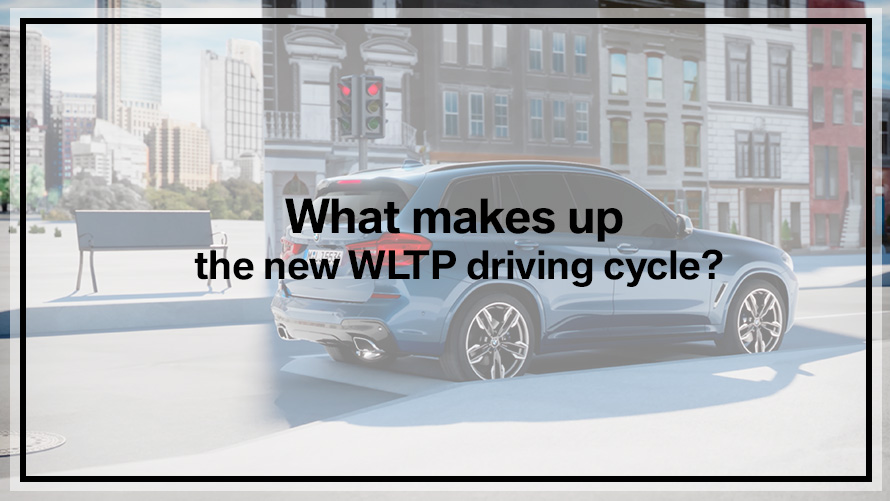
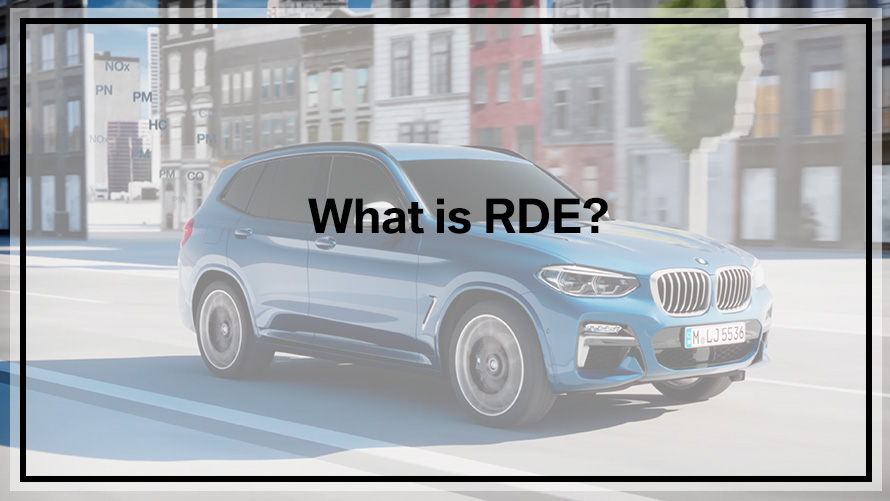
RDE Explained




WLTP INTERNATIONAL.
Who changes over when.
Disclaimer: Not all transition dates to WLTP communication are already finalised as they depend on the national legislation of each country. However the BMW Group will provide their customers with information as soon as possible. For more information on when your country will transition to WLTP please contact your BMW service partner.
As a matter of principle: BMW Group vehicles comply with respective legal requirements. Confirmation of this is provided by the results of relevant official investigations at the national and international level.
WLTP COMPARED WITH NEDC.
Specific differences between the old and current test procedure:
Test procedure | NEDC | WLTP | |
|---|---|---|---|
Test duration | 20 min. | 30 min. | |
Test distance | 11 km | 23.2 km | |
Time spent stationary | 25% | 13% | |
Test phases | Urban, extra-urban, (combined) | Low, Medium, High, Extra-high, (Combined); (plus “City” for electric vehicles and vehicles with plug-in hybrid drivetrain) | |
Speed | Average: 34 km/h Maximum: 120 km/h | Average: 46.6 km/h Maximum: 131 km/h | |
Start temperature | 20–30° C; Cold engine start | 14° C (tested at 23° C corrected for 14° C) Cold engine start | |
Special equipment options | Not taken into consideration. | All equipment options are considered in terms of their influence on aerodynamics, weight and rolling resistance. |
REAL DRIVING EMISSIONS (RDE).
Restriction of pollutant values on the road.
In addition to WLTP, RDE is also compulsory for all vehicle manufacturers in the EU as well as in Israel, Liechtenstein, Norway, Switzerland, Turkey and the UK since 2018. In these RDE tests, the pollutant emissions such as particulate matter and nitrogen oxides (NOx) are measured directly on the road. This method determines average emission values that can be expected during everyday driving.
In order to further reduce these pollutant values, the BMW Group employs various technologies for reducing exhaust emission in its models.
The BMW BluePerformance measures, for example, reduce the emission of nitrogen oxides in diesel engines. The BMW Group is using devices known as nitrogen oxide (NOx) storage catalytic converters in order to reduce nitrogen oxide emissions. In addition, and depending on the model, Selective Catalytic Reduction (SCR) with AdBlue® – a urea solution – converts up to 90% of the nitrogen oxides into water vapour and similarly harmless nitrogen.
The BMW Group was the first manufacturer to introduce the combination of NOx storage catalytic converter and SCR system into series production.
Since 2006, diesel vehicles have additionally been equipped with particulate filters as standard in order to reduce particulate matter. In petrol-engine models, too, special particulate filters are gradually being introduced.
In this way, the BMW Group is able to comply with the low threshold limit values of the EU6c exhaust emissions standard, which has been compulsory for all new vehicles since September 2018. The EU6c exhaust emissions standard prescribes lower particulate limits for petrol-engine vehicles compared to EU6b. The same limits apply for diesel-engine vehicles within the cycle for both EU6b and EU6c.
In order to further reduce pollutant values in everyday use, the BMW Group is applying various technologies in its models for reducing exhaust emissions.
The BMW BluePerformance measures, for example, reduce the emission of nitrogen oxides in diesel engines. With the introduction of the new 6-cylinder engine generation for the diesel as from 2020, the storage catalytic converter located close to the engine is replaced by an even more efficient SCR system, also close to the engine. As a result, NOx conversion is further improved, especially during urban driving. A second SCR catalytic converter, located as before in the underbody, provides additional support, and, depending on the vehicle, has its own AdBlue dosing system.
The BMW Group was the first vehicle manufacturer to introduce the combination of NOx storage catalytic converter and SCR system into series production. By establishing double AdBlue dosing, BMW is again setting new standards in the purification of exhaust gases and pollutant reduction.
Furthermore, since 2006 diesel vehicles have been equipped with particle filters as standard in order to reduce particulate matter. In the petrol-engine models, too, special particle filters re now in operation across the range.
BMW is producing EU6d vehicles from 01.10.2020 - already three months before the legally binding date of 01.01.2021. In contrast to EU6c, the EU6d exhaust emissions standard now also defines threshold limit values for the number of particles and nitrogen oxides in RDE test runs.
EU6d approval guarantees that your vehicle complies with the currently strictest EU emission limit values.
WLTP AND RDE.
The milestones.
- 1992: NEDC.
Introduction of New European Driving Cycle (NEDC). - 09/2017: Transition phase.
Stepwise transition to WLTP and RDE tests for new type inspections.
Communication still with NEDC values. - 09/2018: WLTP & RDE for new vehicles.
New vehicles: certification in accordance with WLTP. Adherence to the particulate limit values under RDE conditions.
As a result, the CO2 emissions and consumption values are comparable for all new vehicles. - 09/2019: RDE for all vehicles.
All vehicles: adherence to the nitrogen oxide limit values under RDE conditions. - 01/2021: WLTP & RDE for all vehicles.
All vehicles: communication of WLTP values in countries that adopt the EU legislation for the approval of vehicles.
REAL DRIVING EMISSIONS (RDE).
Realistic measurement of pollutant emissions by a vehicle driven on the road.
Since mid May 2016, Real Driving Emissions (RDE) measurements have been compulsory for all vehicle manufacturers in the EU as well as in Israel, Liechtenstein, Norway, Switzerland, Turkey and the UK. In these RDE tests, the pollutant emissions, such as particulate matter and nitrogen oxides (NOx), are measured directly on the road. This method determines average emission values that can be expected during everyday driving.
In order to further reduce pollutant values in everyday use, the BMW Group is applying various technologies in its models for reducing exhaust emissions.
The BMW BluePerformance measures, for example, reduce the emission of nitrogen oxides in diesel engines. With the introduction of the new 6-cylinder engine generation for the diesel as from 2020, the storage catalytic converter located close to the engine is replaced by an even more efficient SCR system, also close to the engine. As a result, NOx conversion is further improved, especially during urban driving. A second SCR catalytic converter, located as before in the underbody, provides additional support, and, depending on the vehicle, has its own AdBlue dosing system.
The BMW Group was the first vehicle manufacturer to introduce the combination of NOx storage catalytic converter and SCR system into series production. By establishing double AdBlue dosing, BMW is again setting new standards in the purification of exhaust gases and pollutant reduction.
Furthermore, since 2006 diesel vehicles have been equipped with particle filters as standard in order to reduce particulate matter. In the petrol-engine models, too, special particle filters re now in operation across the range.
In this way, BMW is able to comply with the RDE threshold limit values of the EU6d exhaust emissions standard, which has been compulsory for all new vehicles since January 2020. In contrast to EU6c, the EU6d exhaust emissions standard now also defines threshold limit values for the number of particles and nitrogen oxides in RDE test runs.
EU6d approval guarantees that your vehicle complies with the currently strictest EU emission limit values.
ENGINES WITH BMW TWIN POWER TURBO TECHNOLOGY.
Powerful and efficient: the BMW petrol and diesel engines.
Innovative petrol and diesel engines with BMW TwinPower Turbo technology form the centrepiece of every BMW. They combine the latest injection systems, fully variable performance control and innovative turbocharger technology.
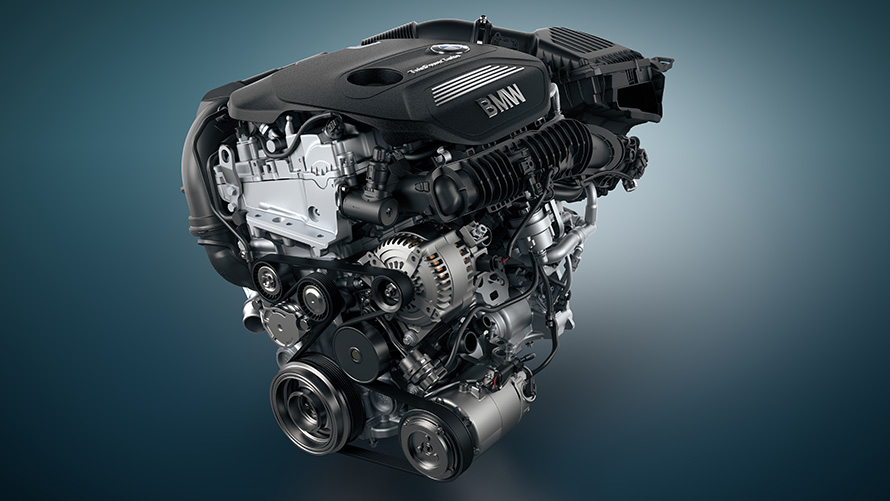
BMW TwinPower Turbo petrol engines.
The innovative three-cylinder petrol engine with its exceptional smoothness, the four-cylinder petrol engine and the BMW TwinPower Turbo straight six-cylinder petrol engine, multiple winner of the “Engine of the Year Award”, set standards. In its latest generation the BMW EfficientDynamics engine family proves to be more economical, lower on emissions and more powerful than its predecessors.
In order to increase efficiency and dynamics, this innovative package – a milestone in the BMW EfficientDynamics strategy – combines the latest injection technology and the Valvetronic fully variable valve control including double-VANOS with innovative turbocharger technology. The result is an especially efficient drive system that impressively illustrates the recognised engine expertise of BMW.
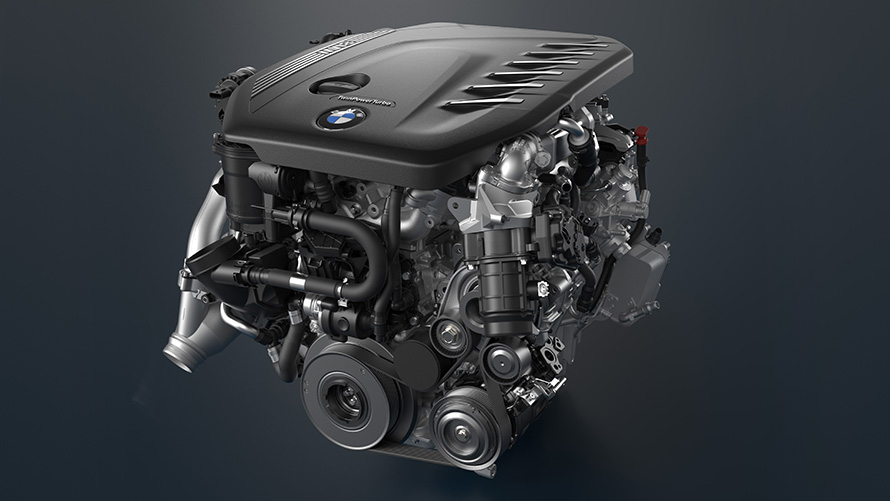
BMW TwinPower Turbo diesel engines.
Reflected in the BMW Twin Power Turbo diesel engines is the systematic implementation of the BMW EfficientDynamics principle: combining top values in economy, power yield and running characteristics with low fuel consumption. There is no doubt about their efficiency and dynamics. Yet at the same time, the BMW TwinPower Turbo three-cylinder diesel engines serving as ideal entry-level engines, the innovative BMW TwinPower Turbo four-cylinder diesel engines and the especially powerful BMW TwinPower Turbo straight six-cylinder diesel engines perform their work with remarkably few emissions and little friction. Maximum driving fun is therefore guaranteed. The diesel power units with the aluminium lightweight construction of the BMW EfficientDynamics engine family have turbocharging with variable turbine geometry. Fuel injection is the responsibility of the latest generation of common rail direct injection.
FAQ – MEASURING METHODS FOR CONSUMPTION AND EMISSIONS.
Your questions. Our answers.
What is WLTP?
The abbreviation WLTP stands for “Worldwide Harmonized Light Vehicles Test Procedure”.
This involves a new test procedure for a more realistic determination of fuel consumption and CO2 emission values of vehicles that will be legally binding for all vehicles as of September 2018. WLTP will replace the previously applicable NEDC procedure.What is the WLTP driving cycle?
A vehicle’s consumption and emissions depend on driving style among other factors. This is why driving data have been compiled for WLTP around the world. These data were used to define 4 representative phases with different average speeds: low, medium, high and extra-high. Within each of these phases, there are different intensities of acceleration, braking and stopping in order to depict situations with a relevance to everyday driving style. The combination of these phases then results in the driving cycle which is communicated as a combined value in the manufacturer’s details. As electric and hybrid vehicles are used particularly within urban areas, their driving cycle contains a 5th phase: the City phase. This results from the average speeds of low and medium.
What does WLTP mean for me?
Introduction of WLTP will mean that the fuel consumption and CO2 values indicated will approximate those in real-world operation. Irrespective of this, taking into account individual special equipment in WLTP will additionally lead to more realistic values as they are based on your personal vehicle configuration. At the same time, however, more realistic values will also mean higher consumption and CO2 standard values for vehicles with combustion engines and a lower range for electric vehicles and plug-in hybrids. Depending on national legislation, higher CO2 taxes may result.
What is RDE?
The abbreviation RDE stands for "Real Driving Emissions". This is a new procedure for determining pollutants such as nitrogen oxides (NOx) and particulate matter. The crucial feature is that measurement takes place on the road under realistic driving conditions and not in the laboratory. A device known as a Portable Emissions Measurement System (PEMS for short) is attached to the exhaust of the test vehicle for this purpose.
What is EU6?
Euro 6 is the name of the current exhaust emission standard for pollutants. It defines lower maximum values for particulate matter and nitrogen oxide emissions than EU5. From September 2018*, the EU6c emission standard will become compulsory, and in comparison to EU6b it specifies even lower limits for the content of particulate matternumber in petrol-engine vehicles. The same threshold limit values apply for diesel-engine vehicles within the cycle for both EU6b and EU6c. EU6d-TEMP from September 2019* and EU6d from January 2021* will again slightly lower the threshold limit values for the number of particles and nitrogen oxides in line with RDE.
*Applies to new vehicles. New vehicle types will each be subject to the new exhaust emission standards 1 year earlier.What does selective catalytic reduction (SCR) mean?
So that the exhaust emission values of a vehicle can be further reduced, liquid ammonia, called AdBlue®, is fed into diesel engines' exhaust system. Selective Catalytic Reduction (SCR) with AdBlue® reduces up to 90% of the nitrogen oxides. What remains is water vapour, nitrogen and CO2. What remains is water vapour, nitrogen and CO2.
What is BluePerformance?
BMW uses BluePerformance technology to reduce the nitrogen oxide emissions of its vehicles even further. Thanks to this technology it is possible to further optimise the emissions performance of the diesel drive. In addition to the diesel particle filter and NOx storage catalytic converter, all BMW 4-cylinder diesel engines have an SCR catalytic converter (Selective Catalytic Reduction) with AdBlue® injection to significantly reduce nitrogen oxides contained in the exhaust gases. With the introduction of the new 6-cylinder engine generation for the diesel as from 2020, the storage catalytic converter located close to the engine is replaced by an even more efficient SCR system, also close to the engine. As a result, NOx conversion is further improved, especially during urban driving. A second SCR catalytic converter, located as before in the underbody, provides additional support, and, depending on the vehicle, has its own AdBlue dosing system.
What is a particle filter?
The particle filter is a measure for reducing particulate matter present in diesel engines and petrol engines.
What does WLTP mean for electric and hybrid vehicles?
As electric and hybrid vehicles are used mainly in urban areas, WLTP provides, in addition to the four phases of low, medium, high and extra high, a separate 5th phase for them – namely the City Phase. This combines the speeds of the phases that best reflect the motoring situation in urban areas: low and medium. This enables more realistic indications of range to be given.






